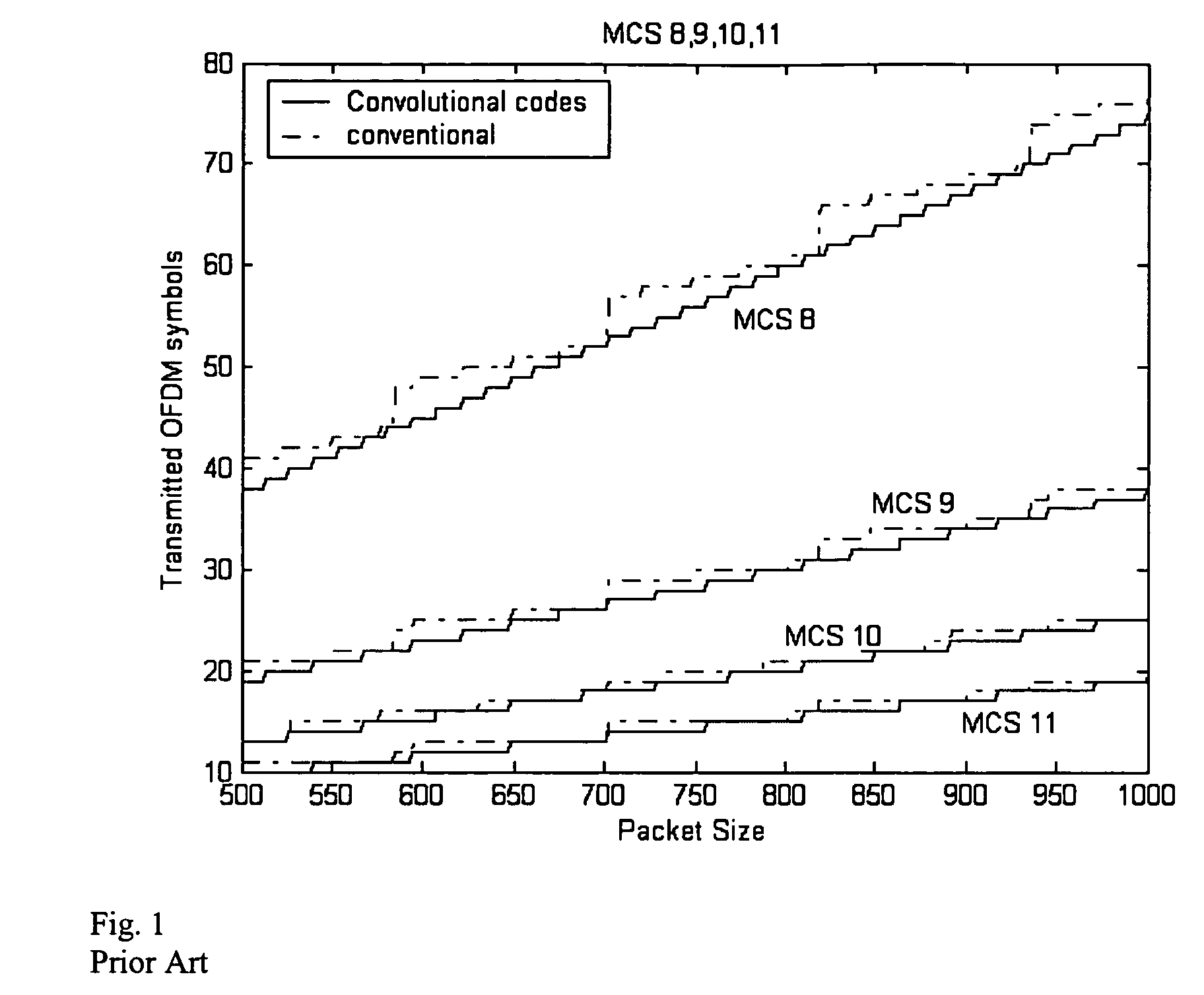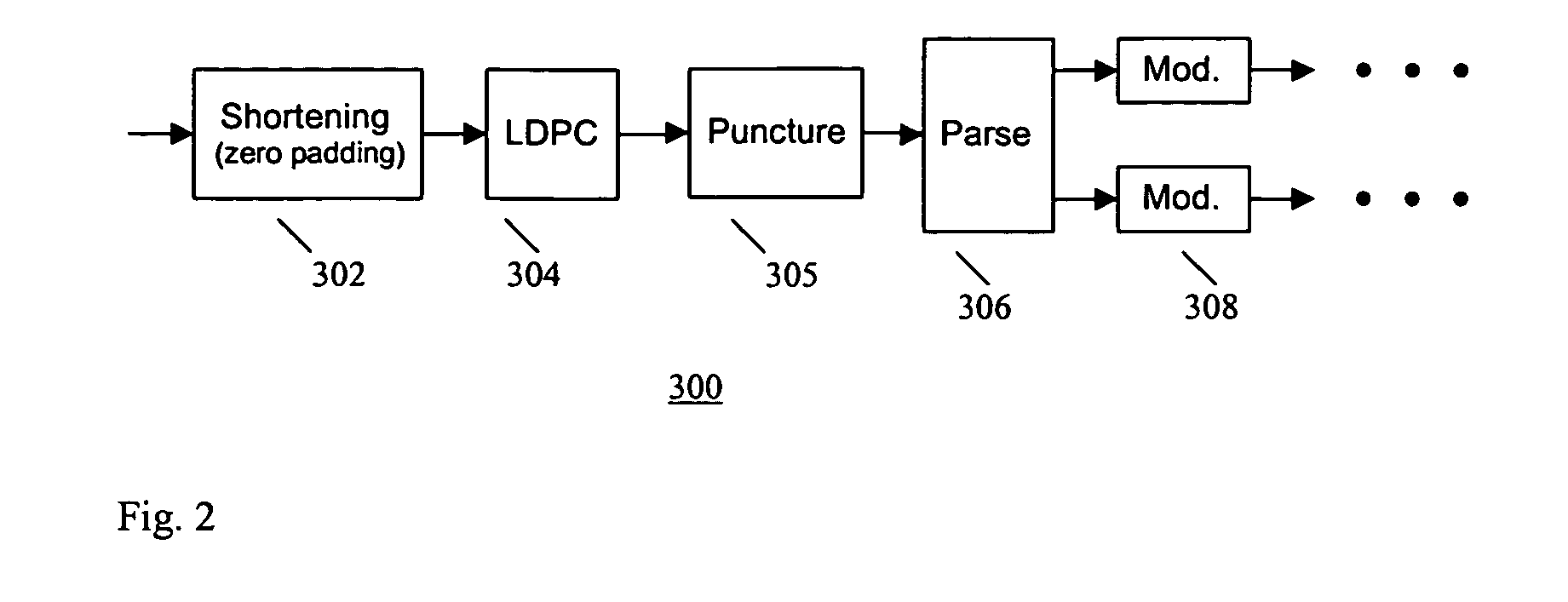LDPC concatenation rules for 802.11n systems
- Summary
- Abstract
- Description
- Claims
- Application Information
AI Technical Summary
Benefits of technology
Problems solved by technology
Method used
Image
Examples
Embodiment Construction
[0026] LDPC coding is a type of linear block coding and can be uniquely defined by a parity check matrix H. The code rate is R=M / N, where N is the number of columns in the H matrix, representing the size of the code, and M is the number of rows in the H matrix, representing the number of parity check equations. An example of a linear block code with N=7, M=3, is shown in relation (1) below: H=[101010101100110001111](1)
[0027] There are two kinds of LDPC codes, regular and irregular. A regular LDPC code contains t number of 1's per-row (row weight) and s number of 1's per column (column weight), where s=t*(1−R). An irregular LDPC code contains uneven number of 1's per-column and per-row. For example, the H matrix in relation (1) is an irregular code.
[0028] LDPC codes can be efficiently decoded using a message-passing algorithm. Such an algorithm operates on the decoder graph by iteratively updating the soft message.
[0029] LDPC codes provide higher diversity order for multiple-input...
PUM
 Login to View More
Login to View More Abstract
Description
Claims
Application Information
 Login to View More
Login to View More - R&D
- Intellectual Property
- Life Sciences
- Materials
- Tech Scout
- Unparalleled Data Quality
- Higher Quality Content
- 60% Fewer Hallucinations
Browse by: Latest US Patents, China's latest patents, Technical Efficacy Thesaurus, Application Domain, Technology Topic, Popular Technical Reports.
© 2025 PatSnap. All rights reserved.Legal|Privacy policy|Modern Slavery Act Transparency Statement|Sitemap|About US| Contact US: help@patsnap.com



